#Indigenous Achievement Week
Text
SDG Week Canada 2024: Celebrating Sustainable Development Goals and Indigenous Achievement Week

View On WordPress
#2030 Agenda#Affordable Energy#City of Saskatoon#clean water#Climate Action#Climate Budget#Decent Work#Economic Growth#Educator-Student Dialogue#Embedding Sustainability#Embrace Sustainability#environmental education initiatives#environmental initiatives#Friends of the Saskatoon Afforestation Areas#Gender Equality#George Genereux Urban REgional Park#good health#greenhouse gas emissions#Indigenous Achievement Week#Indigenous Partnerships#Industry Innovation#Integrating the SDGs#justice#Leading the Rise#Life Below Water#Life on Land#Local Projects#Measuring SDG Progress#Movement for Change#No Poverty
0 notes
Note
how do we know in the books that john is indigenous? can you say more about how his indigeneity is important to his story?
hello! so there is a word of god post on race (doesn't mention John but mentions that Gideon is "mixed Maori"), BUT I frankly don't think word of god statements are worth any weight without actual in-text support (see: the "dumbledore is gay" situation). SO!
Specific evidence that John Gaius is Maori, as revealed in Nona the Ninth:
When he is listing his education, John mentions having gone to Dilworth School (John 20:8). Dilworth is an all boys boarding school in Auckland and accepts students based on financial need instead of academic or sporting achievements. Demographics appear to be about 70% low income Maori boys, indicating that it is highly likely that John is Maori
John reports that P- said he looked like a "Maori-TV pink panther" (John 15:23) when his eyes turned gold. Maori TV is a TV station that is focused primarily on Maori culture & language revitalization, with presumably all or mostly Maori hosts, and tbh I don't see why P- would say this unless John was himself Maori
John uses a te reo Māori phrase ("kia kaha, kia māia") (John 5:20) when he is saying goodbye to the corpses in the cryo lab before the power is shut off. Though it is possible he said this as a non-Maori kiwi, but in combination with the previous two points of evidence I think this all very strongly points to him being Maori
He also renames his daughter Kiriona Gaia, "Kiriona" being just literally the name "Gideon" in te reo Māori
TLT is not a series that hands you anything on a silver platter but to ME this is all pretty solid proof
Why is this relevant to The Locked Tomb?
In Nona the Ninth, we learn that before he completed apotheosis and ate the solar system, John was basically trying to save the earth from capitalism-caused climate change. Climate justice and the rights of indigenous people over their own land are deeply tied together, in the same way that climate catastrophe and capitalism/ imperialism/ colonialism are linked. disclaimer that this is NOT my area of study and others have definitely said it better; this is just the basic gist as I understand it, but on quick search I found some sources here and here if you want to do some reading.
TLT is not a series that hands you anything on a silver platter, but i don't think it is a stretch to see John as an indigenous man trying to save the earth and getting ignored and shut down at every turn by primarily western colonial powers (PanEuro, the USA) who declare him a terrorist and then as a reader thematically connecting that to the experience of indigenous climate activists IRL
there are absolutely TLT meta posts that have discussed this before me; tumblr search is nonfunctional and I have been looking for an hour and a half and cannot find anything specific even though i KNOW i reblogged multiple posts about this in the first few weeks following NTN's release. sad & I am sorry
I think that by the time the books take place, John is 10k years removed from the cultural context he grew up in, with the Nine Houses having become a genocidal colonial power in their own right (with more parallels to be made between John's forever war for the resources of literal life energy and like, oil wars), but I also think that John Gaius is a fictional character who can represent and symbolize multiple different things in service of telling a story. (not to mention the potential thematic parallels being made to how oppressed people sometimes are pressed into replicating the power dynamics of their oppressors and continuing the cycle--now that is a tumblr post i KNOW i read last year and definitely cannot find right now, once again sad & I am sorry)
How Radical Was John Gaius, Really is a forum thread that was locked by the moderators after 234534645674564 pages of heated debate
#john gaius#nona the ninth#the locked tomb#tlt meta#i need to fix my tagging system fr#john meta#tlt thoughts#trb.txt#if anyone wants to add anything or correct anything PLS do so!!! i did my best hope this helps anon. this took me 2 hours
811 notes
·
View notes
Text
Hmm. Alarming trend in mass incarceration in Central America.
Also: Very disingenuous wordplay here.

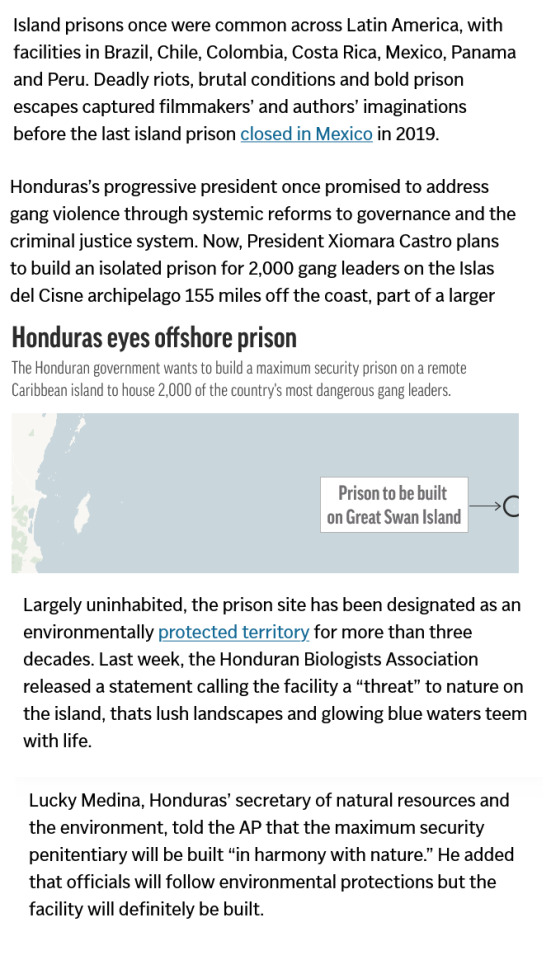
Where do we begin?
-- Very disingenuous for multiple outlets to run with "the West”. Though this initial AP article does specify that this refers to the Western Hemisphere, the choice to run headlines with “West” kinda implies that there are no other island prisons in “The West” (as in the European Union, the United States, Australia, etc.).
-- One of the most infamous incarceration schemes on the planet is Australia’s “Pacific Solution,” a “solution” to refugee migration centered on the imprisonment of asylum seekers on island prisons, including the infamous prisons at Nauru and Manus, both opened initially in 2001, and re-fortified after 2012. (Nauru is extremely isolated, in the South Pacific, 3000 kilometers away from the Australian coast; the Manus detention centre is far away off the northeast coast of Papua.) Since 2012, over 3,125 people have been sent to Nauru while over 4,180 people have been sent to Manus. (The “last refugee held on the Pacific island of Nauru under Australia’s offshore detention policy” was “evacuated” to mainland Australia only on 24 June 2023, not even a month prior to this headline.)
-- Obviously the EU incarcerates refugees on Mediterranean islands, notoriously at Moria on Lesbos, whose international reputation as the home of Sappho has been supplanted by its reputation as a de facto prison for asylum seekers. In October 2015, over 10,000 people landed on Lesbos in just one day. In 2017, the island averaged 2,500 arrivals per month. By 2019, humanitarian investigations showed that over 10,000 people were being held in a facility with a maximum capacity of 3,000. In 2020, fires left over 12,000 refugees on the island without shelter. By December 2021, Doctors Without Borders raised alarm that over 2,200 refugees were living in “dire” conditions on the island. As of early 2023, Lesbos (along with Kos, Leros, Chios, and Samos) is hosting over 4,500 people who are stuck in “reception and identification centers.”
-- And in the Western Hemisphere? The US prison at Guantanomo, also on the coast of an island in this same sea.
-- One of the most notorious island prisons was the early twentieth century French penal colony on the periphery of the Caribbean region at Guiana (run by a France, a “Western” power, in the Western Hemisphere), known internationally as “Devil’s Island.”
-- The federal government says the prison will be built “in harmony with nature.”
-- A prison ... in harmony with nature.
-- An island prison in the Caribbean, a region fundamentally and intimately connected to centuries of imprisonment, plantations, Indigenous genocide, antiBlackness, racial castes, and chattel slavery, all achieved and enforced through the bounded, isolated geographic containment structure allowed by islands.
-- And this is extra-worrying, because it seems it’s a regional trend, evidently for Honduras, El Salvador, and Colombia.
-- Merely a few days before this headline about Honduras, international outlets were profiling Honduras’s direct neighbor, El Salvador, with headlines like “Inside El Salvador’s new ‘mega prison’” (Al Jazeera) and, within the past couple months, headlines like “Prisoners are being tortured to death in El Salvador’s prisons” (VICE News).
-- From less than a week before this AP headline, we have BBC: “El Salvador’s secretive mega-jail.”


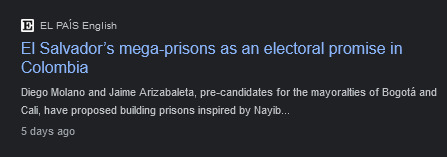
-- Don’t forget nearby Tapachula’s detention of asylum seekers.


Still discussing implementation of literal island prisons despite our collective familiarity with carceral archipelagoes.

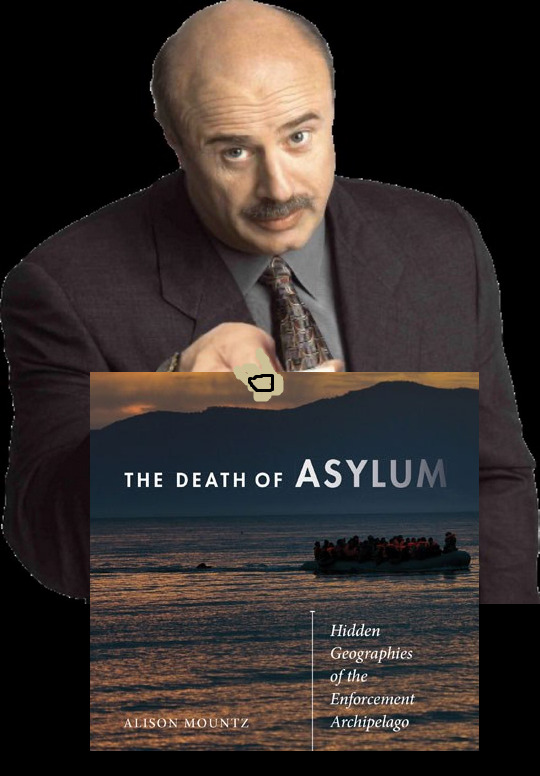
486 notes
·
View notes
Note
Hello. I have been really depressed these past three weeks. In over twenty years of my life I do not remember seeing as much antisemitism as I have in the past month. I am deeply disappointed in the world. I had a higher opinion of it, especially places like Europe, Britain and America. I had believed that when we said "never again", we really had meant "never again". But I was wrong.
It turns out, that our history, and history of Israel has been lied about and twisted into something unrecognizable in universities and mass media, and the world just allowed it to happen. It turns out, that when Jewish people are massacred, people still rejoice in our deaths, using new lies to justify their hatred than the ones they used in WW2. It turns out that the world hates the idea of a Jewish state, it does not want us to have a country of our own, and so will look for any excuse to disparage our state, holding us to an impossible standard that cannot ever be realistically achieved.
We were not given the chance to mourn October 7th. We were not allowed to do so. Almost immediately the world rejoiced, came out in these "Pro-Palestine" protests — even before Israel had retaliated. Called the horrific massacre "resistance". Victim blamed us with the fictional fairytale of "75 year old oppression". Dismissed our grief with "Yeah well but the Palestinian deaths—". Screamed "From the River to the Sea". These were the words we heard on the 7th and 8th of October as news of our people's deaths were reaching us in real time. How can anyone support this so-called "Pro-Palestine" movement after that? Are we still hated this much?
I have already lost someone I considered a friend over this. She started reposting antisemitic lies, calling us "colonial settlers", parroting the Khazar conspiracy theory about Ashkenazi jews (which I am), making absurd claims about how we weren't indigenous, and how Israel does not have the right to exist and how we should cede control to the Palestinians and then live in "their" state, under "their" government. Yeah, we have already seen on the 7th how that idea would go. I was especially disheartened, because she is a person of color, as a fellow minority, I thought she would know better and would know what it's like to be hated over something you can't control...
I still may lose another friend. Recently, she has written me "It looks like Israel is enjoying this! They used this as an excuse!" I have tried to educate her and she seems to have listened, but I doubt my words will be enough. I know where she has gotten these lies, with the mass media continuously airing unverified statistics posted by Hamas controlled institutions all the while sneering at every shred of evidence Israel publishes. I'm tired. I do not believe I can fight against this continuous stream of lies. I'm tired and heartbroken that this is happening to us again.
I always wondered how the world ever bought these lies about how we were responsible for Germany's economic crisis and how we controlled world governments. Now I know. Because it's happening again. Just with new lies. And everything we've seen in WW2: the marking of Jewish homes, the pogroms, the persecution - it's all happening. Again.
I'm sorry for this extremely depressing message. My father, my grandmother and I no longer feel safe in this world. And we feel silenced lest we become victims as well.
I have nothing to add to this, it is as if someone wrote out my thoughts and feelings for me.
I wish and pray for safety for you and your family in this time when safety is an uncertain luxury. We have outlived them before, we will outlive them again. We meant "never again" when we said it, and I know our community well enough to know we follow through.
Am Yisrael chai
#jewish#jumblr#judaism#jew#opinion#proud israeli#israel solidarity#discourse#antisemitism has no place here#antizionism is antisemitism#fuck antisemitism#fuck hamas#never again is now#never again#we will outlive them
181 notes
·
View notes
Text
Good News - May 1-7
Like these weekly compilations? Support me on Ko-fi! Also, if you tip me on Ko-fi, at the end of the month I'll send you a link to all of the articles I found but didn't use each week - almost double the content!
1. New study says conservation works, providing hope for biodiversity efforts
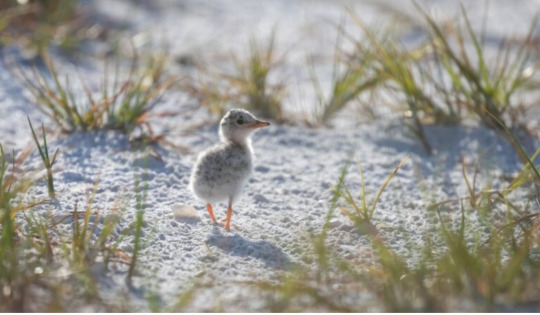
“A new study published in Science reveals that conservation works, with conservation actions improving or slowing the decline of biodiversity in two-thirds of the cases analyzed.”
2. Monk Seal Pup Debuts in Waikīkī on Lei Day
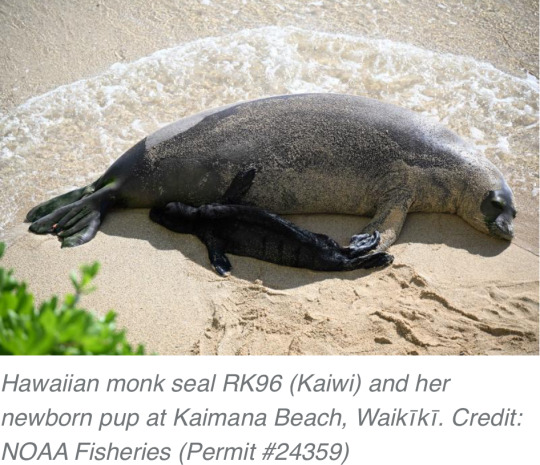
“Endangered Hawaiian monk seal RK96 (Kaiwi) gave birth to her sixth pup on popular Kaimana Beach in Waikīkī, Oʻahu! […] Hawaiian monk seals are one of the most endangered seal species in the world, so each pup represents hope for the species’ recovery.”
3. West Coast Indigenous-led marine conservation area gets global spotlight
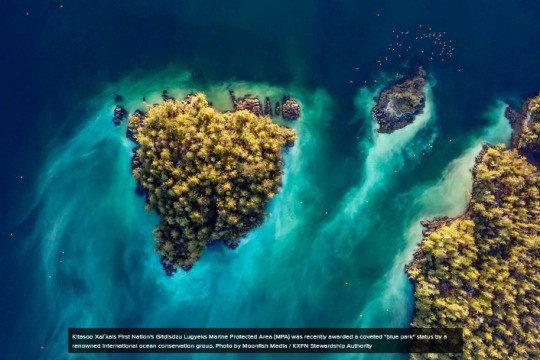
“A coastal First Nation is celebrating global recognition of its marine protected area after recently snagging a “blue park” designation that highlights exemplary ocean conservation efforts around the world. […] Kitasu Bay supports one of the last abundant herring spawns along the central coast, vital to the nation’s communal herring roe on kelp (ROK) fishery - which harvests the protein-rich eggs but leaves the fish alive to flourish and spawn again.”
4. The number of fish on US overfishing list reaches an all-time low. Mackerel and snapper recover
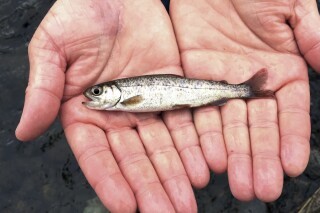
“The report states that 94% of fish stocks are not subject to overfishing, which is slightly better than a year ago. The U.S. was able to remove several important fish stocks from the overfishing list, NOAA said in a statement. […] The removal of species from the overfishing list shows the U.S. is making progress, said Rick Spinrad, NOAA’s administrator.”
5. Researchers Collaborate with the Shipping Industry to Cut Costs, Fuel Consumption and Greenhouse Gas Emissions in Shipping
“Through coordinated ship scheduling and an optimisation of ship operations and port services, the objective is to achieve a substantial increase in energy efficiency and a 10-20% reduction in fuel consumption, consequently resulting in lowered greenhouse gas emissions [and] leading to substantial economic benefits for shipping and environmental advantages for society[….]”
6. The city flower farm that is changing lives
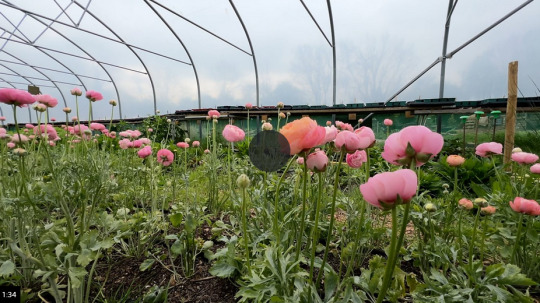
“Heart of BS13 Flowers in Hartcliffe is part of the wider Heart of BS13 charity which tackles food insecurity in south Bristol. Profits from the flower sales to run workshops, offer volunteer and trainee placements, and create education opportunities for people from Hartcliffe.”
7. Four falcon chicks hatch in Glasgow university tower
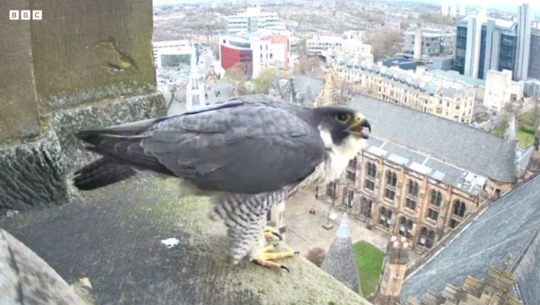
“Members of the [Glasgow Peregrine] project hope to […] fit [the chicks] with electronic tags that will enable monitoring of their movements. Mr Simpson added: "With the identification tags we can see where they have gone, how high they fly and other information that would be really useful." In recent years the group have held peregrine watches at the university, allowing people to see the birds in their nest.”
8. 'Banana pingers' are saving whales and dolphins around the world
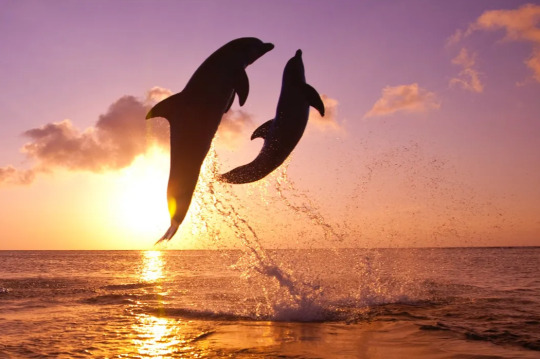
“[T]he Kibel brothers, Pete (a fisheries biologist) and Ben (an engineer) […] have been utilising light to protect turtles, sound to protect porpoises and electro pulses to protect sharks. [… Trials] showed reduced average catch rates of blue shark by 91%, and catch rates of pelagic stingray by 71% […as well as] a fall in the number of sea turtles being trapped by 42%.”
9. New vaccine effective against coronaviruses that haven't even emerged yet
“Researchers have developed a new vaccine technology that has been shown in mice to provide protection against a broad range of coronaviruses with potential for future disease outbreaks -- including ones we don't even know about. […] The new vaccine works by training the body's immune system to recognise specific regions of eight different coronaviruses, including SARS-CoV-1, SARS-CoV-2, and several that are currently circulating in bats and have potential to jump to humans and cause a pandemic.”
10. Grassland birds, Forest birds and Other Migratory Birds to Benefit from More Than $22 Million in Funding Throughout the Americas
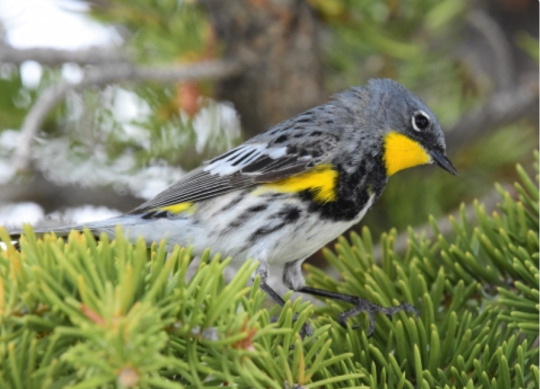
“This year, more than $4.87 million in federal funds will be matched by more than $17 million in partner contributions going to 30 collaborative conservation projects in 19 countries across the Americas. “These investments will [… protect] millions of acres of diverse habitats needed by grassland birds, forest birds and shorebirds for wintering, breeding and migration,” said Service Director Martha Williams.”
April 22-28 news here | (all credit for images and written material can be found at the source linked; I don’t claim credit for anything but curating.)
#good news#hopepunk#sorry its late i got distracted lol#biodiversity#conservation#seal#monk seal#hawaiʻi#oahu#first nations#fish#noaa#shipping#climate change#greenhouse gasses#ships#flowers#falcon#glasgow#university#peregrine falcon#birds#whale#dolphin#shark#turtles#vaccine#coronavirus#health#animals
17 notes
·
View notes
Text
A STATEMENT FROM INDIGENOUS AUSTRALIANS WHO SUPPORTED THE VOICE REFERENDUM
A Week of Silence for The Voice
https://x.com/thomasmayo23/status/1713352710588878944?s=20
Text copied below:
Recognition in the constitution of the descendants of the original and continuing owners of Australia would have been a great advance for Australians. Alas, the majority have rejected it.
This is a bitter irony. That people who have only been on this continent for 235 years would refuse to recognise those whose home this land has been for 60,000 and more years is beyond reason. It was never in the gift of these newcomers to refuse recognition to the true owners of Australia. The referendum was a chance for newcomers to show a long-refused grace and gratitude and to acknowledge that the brutal dispossession of our people underwrote their every advantage in this country.
For more than six years, we have explained to our nation why the Voice was our great hope to achieve real change for our families and communities.
To the Australians who supported us in this vote we thank you sincerely. You comprise many millions of Australians of love and goodwill. We know you wanted a better future for Australia, and to put the colonial past behind us by choosing belated recognition and justice.
We thank the Prime Minister and his government for having the conviction to take this referendum to the Australian people at our request. We thank him for his advocacy and all parliamentarians who did the same, including members of the Teals, Greens, Nationals and independents who stood by us. We pay particular respect to the Liberal parliamentarians who bravely advocated for the voice.
We also thank our fellow Australians from all sectors of the community, including multicultural, faith, professional, business, creative and sporting organisations. To the hundreds of thousands who took to the streets, knocked on doors and made over a million phone calls, thank you for your love and support.
Our deep chagrin at this result does not in any way diminish our pride and gratefulness for the stand they had the moral courage to take in this cause now lost. We know we have them by our side in the ongoing cause for justice and fairness in our own land.
Now is not the time to dissect the reasons for this tragic outcome. This will be done in the weeks, years and decades to come. Now is the time for silence, to mourn and deeply consider the consequence of this outcome.
Much will be asked about the role of racism and prejudice against Indigenous people in this result. The only thing we ask is that each and every Australian who voted in this election reflect hard on this question.
To our people we say: do not shed tears. This rejection was never for others to issue. The truth is that rejection was always ours to determine. The truth is that we offered this recognition and it has been refused. We now know where we stand in this our own country. Always was. Always will be.
We will not rest long. Pack up the Uluru Statement from the Heart. Fly our flags low. Talk not of recognition and reconciliation. Only of justice and the rights of our people in our own country. Things that no one else can gift us, but to which we are entitled by fact that this is the country of our birth and inheritance.
Re-gather our strength and resolve, and when we determine a new direction for justice and our rights, let us once again unite. Let us convene in due course to carefully consider our path forward.
We are calling A Week of Silence from tonight (Saturday 14th October) to grieve this outcome and reflect on its meaning and significance. We will not be commenting further on the result at this time.
We will be lowering our Aboriginal and Torres Strait Islander flags to half-mast for the week of silence to acknowledge this result. We ask others to do the same.

[photo ID: the Torres Strait Islander flag, Australian flag, and Aboriginal flag being flown at half mast at AIS and over the Sydney Harbour Bridge today 15th October 2023. It is the day after the Referendum was defeated.]
#auspol#referendum#the voice to parliament#indigenous voice to parliament#voice to parliament#week of silence
42 notes
·
View notes
Text
An important reminder of the disastrous consequences of touristic massification.
I translated another article about the housing emergency in the Balearic and Pityusic Islands.
The Balearic Islands are Mallorca (sometimes known in English as Majorca), Menorca (sometimes known in English as Minorca) and includes the Pityusic Islands, which are Eivissa (usually called Ibiza in English) and Formentera. All of them are found in the Southern Europe, in the Mediterranean sea, and are extremely popular holiday spots, particularly for German and British tourists, but also tourists from the rest of the world. Their local language is Catalan, in which this article is originally written.
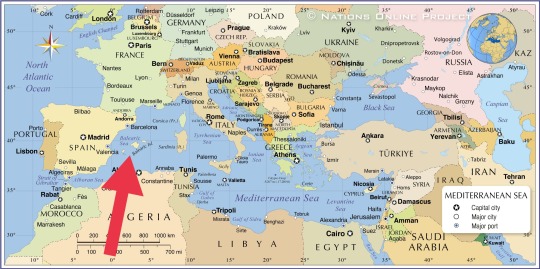
Sad is he who without love has to search for a home (in the Balearic Islands)
Opinion piece by Sebastià Alzamora
The housing emergency in the Balearic and Pityusic Islands has existed for some time and it's taking more dramatic tones every day. From teachers who have been destined to Eivissa as a substitute and spend their weeks in the island sleeping in their car (because with a salary of 1,000€ it doesn't make sense to rent even just one room for 700€ or 800€ per month) to the situation showed by a recent Caritas report on poverty in the Balearic Islands: many low-income families, or with uncertain incomes (often hotel workers) who cut the money they should spend on food to be able to pay rent (with all the consequences of cutting short your food, specially for children). Also, the explanation of the "no vacancies" mysterious phenomenon that the Balearic Islands, and particularly Mallorca, achieved last summer: since everyone knows that the housing prices in these lucky islands are unfeasible, hotel owners this season take advantage of local workers (paying them a salary so low that doesn't allow them to move out of their parents' home or, even worse, their ex-spouse, as it also happens often).
It was precisely at the beginning of last summer that the Valencian and Balearic governments met to work together on the housing emergency. [...] they agreed to ask Sareb to give them some flats to be used as public housing. In fact, the Company for the Management of Assets Proceeding from the Restructuring of the Banking System (also known as Sareb, also known as the bad bank) has over 8,500 houses in the Valencian Country and over 1,000 in the Balearic Islands. Since Sareb took these apartments when their inhabitants were evicted as a result of the trash mortgages given by banks during prosperous years, it makes sense that now they will be destined (at least some of them) to housing.
I don't know how these good intentions have evolved, but the search and/or building of protected housing, even though it might be necessary as an emergency measure, is nothing more than a palliative or a patch to a situation with well-known causes. This is what's behind the problem: the overexploitation of the land, the urban speculation, a market with out-of-control prices, and a touristic saturation that makes guiris [tourists] literally invade the towns, neighbourhoods and areas that not so long ago were still the indigenous population's.
The famous quality tourism has turned out to be European multimillionaires, often with fortunes of a suspicious origin, who buy or order to build their mansions with heliport for exorbitant prices, bursting the local price for square meter. This is the strict market logic, but if the market logic isn't somehow corrected, we can find ourselves in a triple massive migration: for climate reasons (the Mediterranean is one of the places in the world where global warming is most noticeable, and the Balearic Islands are one of the most heated places in the Mediterranean), for the lack of job opportunities (also for the young people whose university degrees aren't about tourism, and who can't find work here), and for lack of access to housing.
#actualitat#illes balears#balearic islands#mallorca#menorca#eivissa#formentera#majorca#minorca#ibiza#travel#tourism#gentrification#touristification#touristic massification#europe#mediterranean#capitalism#housing#housing crisis
80 notes
·
View notes
Text
Indigenous groups go after Lula coalition amid veto vote

With Congress set to analyze a presidential veto of a landmark indigenous land bill this week, Brazil’s Indigenous People Articulation (Apib) has launched a manifesto decrying the “anti-indigenous” sectors of the current governing coalition, affirming that traditional communities’ rights are “non-negotiable.”
In September, pro-agro sectors of Congress pushed through a bill establishing the so-called “time-frame argument” for indigenous land claims in Brazil. Said argument stipulates that traditional communities would only be able to demand ownership of territory if they could prove that they effectively inhabited it on October 5, 1988 — the day Brazil’s current Constitution was enacted.
The approval was in direct response to a Supreme Court decision that ruled the time-frame argument as unconstitutional. President Luiz Inácio Lula da Silva vetoed most of the bill in October, and Congress is set to ratify or overrule those vetoes this week.
While Apib hails Lula’s election last year as a “collective achievement,” it complains that the electoral context forced him to form a “broad ideological alliance, encompassing conservative and anti-indigenous economic and political sectors.”
Continue reading.
#brazil#brazilian politics#politics#environmental justice#indigenous rights#mod nise da silveira#image description in alt
31 notes
·
View notes
Text
Other Events During Solarpunk Aesthetic Week (Winter Solstice Edition)
As you can imagine, there's a good deal of events happening during Solarpunk Aesthetic Week this season! We wanted to highlight just a few other things that are happening, so they can maybe inspire some of what you do for Solarpunk Aesthetic Week!
Arabic Language Day is on December 18th, and aims to promote and recognize the importance of the Arabic language, encouraging linguistic and cultural diversity and foster understanding. There's often conferences, workshops, and cultural performances held on this day.
It's important we consider the important role and contributions of Arabic people on history and the world, as well as the present and future of Solarpunk! It may also be a good day to jumpstart a new language learning adventure, if you want!
International Migrants Day is also on December 18th! It's a day that seeks to promote the well-being and rights of migrants worldwide, dedicated to recognizing the contributions and achievements of migrants and raising awareness about the need to improve conditions, safety measures, and social acceptance for migrant individuals and families.
Many of us like to imagine solarpunk societies as being entirely or semi-nomadic, traveling to different places depending on the seasons. But an important part of living solarpunk is supporting people right now. How can we support migrants in our communities and improve relations between Indigenous communities and immigrants in a solarpunk future? How would a solarpunk future welcome migrants while protecting and supporting indigenous communities and land? How does the reality of climate refugees in particular impact the development and ideals of a solarpunk future? How would a solarpunk society migrate across the land, and what would it look like?
International Human Solidarity Day is on December 20th, and serves as a reminder to the importance of unity in diversity and the need to work together to address global challenges. There may be various events and activities to mark this event.
Solidarity is an important tenant of Solarpunk, and of activism in general. Consider ways you can show solidarity through art, writing, music, or more. A story about people working together towards a common goal, of supporting one another in the face of a difficult obstacle? An illustration to support a current cause, or of a distant future's fight? Can you do a craft to show solidarity with others?
Winter Solstice is on December 21st in the Northern Hemisphere! It's the astronomical start of the winter season, and symbolizes the death and subsequent rebirth of the sun--the shortest day and longest night of the year.
Often when visualizing Solarpunk, we think of lots of plants and greenery on a bright sunny day. But this isn't what Solarpunk would look like everywhere, or all the time in most places. Let's visualize what we think Solarpunk would look like in fall and winter! How do you solarpunk in the colder months, what kind of crafts do you pick up when things get chilly? What do you imagine a solarpunk society's infrastructure and fashion would look like when the temperatures dip low? What would change and how when our current society is reborn into a more solarpunk one?
Summer Solstice is also December 21st in the Southern Hemisphere, marking the official beginning of the summer season! This is the zenith of the sun's position in the sky, and the longest day of the year.
While things are getting cold for some of us, the temps are just ramping up for others! Let the sun and its energy inspire your works, imbue yourself with the bright and blazing energy of our brightest star!
December 24th is Christmas Eve for those who celebrate! Many people celebrate by gathering with friends and family to enjoy feasts, exchange gifts, and generally enjoy time together.
In a consumerist society, there's a lot of emphasis placed on the gift-giving part of Christmas celebrations--how would it look in a Solarpunk society focused on community building instead? Are you doing anything Solarpunky this Christmas? Let us know!
Is there more we're forgetting? Want to share the way you celebrate a particular event? Sound off and let us know--we'd love to hear about other related events and how you're taking part!
15 notes
·
View notes
Text
an expression of something, or perhaps a record of insanity
obviously there's a famine because israel destroyed any indigenous means of food production, and aren't letting food trucks in, so they're just sitting at the border. not to mention that time the other day that they fired on the crowd gathered around a food truck on the beach, causing a panicked stampede that killed people. 'the guys with guns won't let us in' is not a problem that can be solved by money. still. if even one person escapes death by starvation because an aid org or a medical org had more money on hand, then that money is better off in their hands than mine...
rn i feel very conscious that while it's impossible to achieve any significant change without sacrifice, the converse is not true, there's no magical law that ensures sacrifice must be rewarded. a social media campaign resulting in a few tens of thousands of people trying not to spend money for a week is not a strike pressing demands, and probably won't make a noticeable blip on whatever economic statistics are gathered by whoever gathers economic statistics, and even if someone notices the line going down a bit, they probably are not able to conclude it's supposed to be a general strike for Palestine.
similarly, activist actions that deliberately get someone arrested for the sake of a few hours of annoyance to security are a questionable trade in the battle of attrition. I still remember doing first aid at the massive mobilisation against the arms fair a few years ago, which ran up a hefty policing bill cutting people out of lockons on the main road, but did not in fact stop the arms fair. direct action does not always get the goods.
and in general I believe our people should not be thrown away lightly. getting arrested should be something we are prepared to risk but a risk we mitigate as much as possible, not something we actively seek out. this is something that the antifascists understood pretty well, with tactics like the black-bloc and de-arresting. but the current trend in activist orgs is to exploit the state's unwillingness to inflict bodily harm by putting activists in intentionally dangerous situations and forcing the state to spend and money time freeing them, with the resignation to getting arrested. it's less direct action and more stunts for the media. but is that just an excuse? 'the americans are not what we call a useful people', they say, when the yanks don't want to be arrested.
the gnawing feeling that I must do something wants me to stand up and prove that I give a shit. I just cannot see what would actually be effective with the resources I have available to me. the people who have real power in this situation fundamentally have no reason to listen to me. I'm sure many of them think, quietly, along the lines of that guy at the protest a couple months back who walked by and called me a gender-confused leftist pedo: giving a shit about people in palestine is disgusting to them.
I've signed up to do arrestee and court support and shit like that with a certain org that's had some success shutting down Elbit facilities in this country. between health shit and work, I'm not realistically in a place where I'm capable of doing the spiky direct actions at the moment, but if I can be part of the logistics wing for the people who can do it, maybe I can feel less fucking useless. I hope when the call comes, I'm able to get out there and show up, rather than crushed in another wave of mysterious fatigue.
of course, if a 32-year-old disabled game dev could stop a war from her bedroom, the world would be a very different place... but I must not ignore that I have some power. even if it's just the money I earn at this job.
I frequently fall back to wondering what I'd have done if I'd lived in Germany or Poland during the Holocaust. the fantasy is that I'd be a partisan in the woods, fighting the Nazis by any means available; a likely answer is probably that I'd flee the country, or die in a camp. but the scariest thought is that I'd have been able to get away with 'inner emigration', and just keep my head down and do nothing. cue the daniel kahn song I guess. (Daniel Kahn's song is of course a lot more subtle and bitter in its treatment of the subject, not just this goofy morality play in my head.)
words are cheap!!!
18 notes
·
View notes
Text
What a truly progressive government looks like
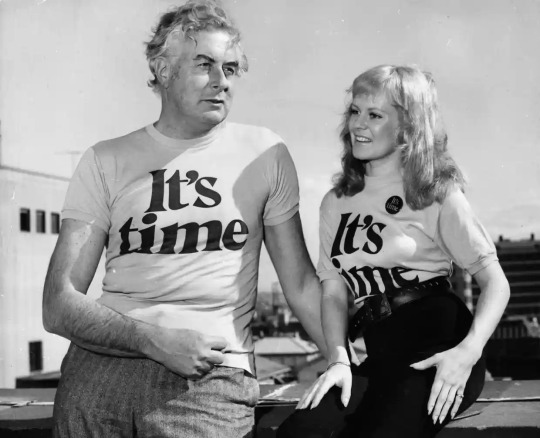
The man in this photo is Gough (pronounced Goff) Whitlam, the 21st prime minister of Australia. Fifty years ago, on 2 December 1972, Gough Whitlam’s Australian Labor Party won the federal election, and ushered in easily the most progressive government Australia has ever had. It was a government that truly changed Australia, and set it on the path towards being the country it is today.
Gough (he was one of those rare politicians who was widely known simply by his first name. There was truly only one Gough) was tall and imposing, with silver hair and dark eyebrows, and a booming voice that delivered his razor sharp wit. When he led the ALP to victory in 1972, the party had been out of government for 23 long years, and were determined to make a difference when at last they were back in power. As you’ve probably worked out from the glorious 1970s t-shirts in the picture, the election campaign slogan was It’s Time. It featured in a famous election ad jingle, performed by Alison McCallum and accompanied by many famous faces of the time.
After winning the 1972 election, Gough wasted no time in implementing his election promises. Not willing to wait until the final results of the election were confirmed and the full ministry could be appointed, he and his deputy, Lance Barnard, were sworn in as prime minister and deputy prime minister on 5 December. Between the two of them, they held all 27 government portfolios for two weeks until the rest of the ministry was sworn in. The duumvirate, as it was known:
ordered negotiations to establish full relations with China
ended conscription in the Vietnam War
freed the conscientious objectors who had been jailed for refusing conscription
ordered home all remaining Australian troops in Vietnam
re-opened the equal pay case (for women, who were at that time by law paid less than men for doing the same job) and appointed a woman, Elizabeth Evatt, to the Commonwealth Conciliation and Arbitration Commission, the body that made the decision
abolished sales tax on the contraceptive pill
announced major grants for the arts
appointed an interim schools commission
barred racially discriminatory sport teams from Australia, and instructed the Australian delegation at the United Nations to vote in favour of sanctions on apartheid South Africa and Rhodesia
And that was just the first two weeks.
In the three years that followed, the Whitlam government:
introduced a national universal health scheme
abolished university fees
abolished the death penalty for federal crimes
established Legal Aid
replaced God Save the Queen with Advance Australia Fair as the national anthem
replaced the British honours system with the Order of Australia
created the family court and introduced no fault divorce, the first country in the world to do so
ended the White Australia policy
introduced the racial discrimination act
advocated for Indigenous rights, including creating the Aboriginal Land Fund and the Aboriginal Loans Commission, and returned some of their traditional lands to the Gurunji people in the Northern Territory. This was the first time that any Australian government had returned land to its original custodians. Here’s a famous photograph by Mervyn Bishop of Gough pouring a handful of red earth into the hands of Gurunji leader Vincent Lingiari, ‘as a sign that this land will be in the possession of you and your children forever‘:

I’m sure there are more achievements of the Whitlam government that I’m forgetting. There were a lot.
Of course, the Whitlam government will always be seen through the lens of the way it ended, but I’m not going to talk about the constitutional crisis of 1975 - plenty of books have been written about that, including one by Gough himself - or about the various dysfunctions of the Whitlam government, particularly once the international oil crisis hit in 1973.
I just really want to point out that truly progressive governments can change their countries profoundly, and for the lasting betterment of their people. Not everything that the Whitlam government achieved withstood the assaults of the conservative government that followed it, but some did and are still with us, half a century later, while other aspects, like universal healthcare, were resurrected by the Hawke Labor government a decade later, and endure to this day.
Gough died in 2014 at the age of 98, not quite making his personal century. Tonight I’m raising a glass to his memory. Thanks, Gough, for all the things you did to make this country a better, fairer, more inclusive place.
76 notes
·
View notes
Text
This post was made on Wajuk land, I wish to acknowledge the traditional custodians of the land I am on and I acknowledge and respect their continuing culture and contributions to this land and country.
Hey everyone in Australia it’s currently NAIDOC week, which is held from the first week of July annually. It’s a week to highlight the culture, achievements and history of Aboriginal and Torres Strait Islander peoples. Please keep in mind I myself am not Indigenous nor a person of colour.

[image description: The 2022 National NAIDOC Poster which is black and white except for the Aboriginal and Torres Strait Islander flags. There are three speech bubbles saying Get Up, Stand Up, and Show Up which are next to closed fists and various texts highlighting Indigenous struggles such as “White Australia has a Blak history.]
Aboriginal culture is the oldest continuous living culture on Earth which has evidence that it extended back 65,000 years. At the time of colonial invasion in 1788 it was estimated that around 250 languages and 600 dialects were spoken in around 500 different nations. Today, only 120 languages are still spoken and many are in danger of becoming extinct.
I’ve compiled a list of resources below to help support Aboriginal and Torres Strait Islander causes and for people to learn about language, country and culture.
Educational Resources
Map of Australia’s First Peoples & Explanation Of Country
Welcome To Country, Acknowledgement of Country and Understanding Ceremony
Aboriginal And Torres Strait Islander Social Justice
Blak, Black, Blackfulla – Language is important, but it can be tricky
Aboriginal English: AbE and Kriol
List of petitions to support Indigenous Australian causes (I’m not sure how many of these are Australian only)
Protect sacred Djab Wurrung birthing trees from expansion of the Western Hwy by Vicroads
End the abuse of Aboriginal children. #CloseDonDaleNow.
Create a database of traditional place names
Uluṟu Statement From The Heart
Support The Rights Of First Nations Cultural Educators
Blak Creators To Support
Tiktok
Books: The White Girl (Tony Birch), Catching Teller Crow (Ambelin and Ezekiel Kwaymullina), Butterfly Song (Terri Janke), Living on Stolen Land (Ambelin Kwaymullina), Dark Emu (Bruce Pascoe), The Boy From The Mish/Ready When You Are (Gary Lonesborough)
Music
Artists
Charities That Support Indigenous Australians
Aboriginal Charity Guide
ANTaR: Justice, Rights and Respect For Australia’s First Peoples
Indigenous Literacy Foundation
If anyone finds these to be outdated/incorrect or has any other resources they’d like me to add: feel free to let me know
230 notes
·
View notes
Text
thoughts of the day: 5/23
What I've mostly been ruminating on this week is ideas of Euro-American versus Indigenous thoughts around land use.
This week I visited Hirundo Wildlife Refuge in Western Old Town. The refuge has done its due diligence in recognizing this as a place where Wabanaki historically lived and gathered, as far back as 5,000 years ago. It is registered in the National Register of Historic Places by the U.S. Department of the Interior. In the 1970s, the University of Maine did an archaeological dig at the site, and the land still bears the marks of those digs.

On one hand, the recognition of this historical significance is good, but it also continues to place the importance of this place firmly in the past. "This was a place for the Wabanaki, but now it is a wildlife refuge, and isn't it so nice that we're taking care of it and keeping it safe from human hands?"
The removal of humans from the ecosystem seems to be a distinctly European idea; In their eyes, the relationship between humans and the environment is necessarily destructive and exploitative rather than symbiotic. This leads to the popular idea among disillusioned, often white academics that the world would be better off without humans in it.
Robin Wall Kimmerer explores this idea further in her 2013 novel "Braiding Sweetgrass", a collection of essays that marries Indigenous knowledge and Western science beautifully. I believe that each have their place, but in order to best learn, we need to utilize Two Eyed Seeing (interestingly, an idea that was first brought forward and named by two Mik'maq (Wabanaki) elders).
To my point.
In the first chapter of Kimmerer's book, "Skywoman Falling", she compares Indigenous and Western creation stories. Skywoman's relationship between the animals and plants (non-human relatives, as my mentor often says) is symbiotic and serves to better the lives of both.
Meanwhile, the Christian creation story and relationship Adam and Eve have with their environment is far less reciprocal. They are shunned from their comfortable home and left to suffer in the world, and must take what they can get to survive. I think this lies at the center of much of Christian (and thus, Western) ideology--That we must take.
Reciprocity is so very important to Indigenous lifeways and environmentalism. I return to ideas of place and how this centers around my visit to Hirundo, and the readings I did this week (Specifically, exploring Samantha Senda-Cook's piece, Materializing Tensions: How Maps and Trails Mediate Nature). The public often tends to view National Parks and wildlife reserves as being raw nature, but these too are shaped by human hands to cater to a certain demographic, to fulfill ideas of what nature "should" look like. But they are managed, and their trails managed to a degree. As Senda-Cook puts it:
Like Niagara Falls, some landscapes that have been physically altered are perceived as not constructed, as ‘‘natural.’’ For example, Olmsted (1863/1990) best known for designing New York’s Central Park was concerned with presenting nature to at once cultivate visitors’ feelings and mask such cultivation. He planned every aspect of a landscape, including details such as flower head size and stem length, to communicate particular messages and evoke particular emotions. La Pierre (1997) described how the National Park Service (NPS) has started to include human artifacts such as roads in preservation efforts because they have become as important to the landscape as the land itself. She explained that visitors love the views from the road in Acadia National Park in Maine. ‘‘What visitors may not realize is that John D. Rockefeller, Frederick Law Olmsted, Jr., and others deliberately manipulated nature to achieve those views’’ (p. 32). Finally, as Spirn (1996) contended, efforts to construct landscapes such as the ones enacted by Olmsted remain largely invisible to park visitors. She states, ‘‘Few people now recognize [Central Park, Niagara Falls, and Yosemite] as built landscapes’’ (p. 91). These places carry a unique kind of material rhetoric that appears natural.
(Senda-Cook, pg. 357.)
I've also ruminated on how National Parks have served to block cultural access to traditional hunting grounds, fisheries, and places were medicines may be gathered, such as in Acadia National Park. Acadia is my next destination in exploring my thoughts and research. I will explore this idea more in my next post.
3 notes
·
View notes
Text
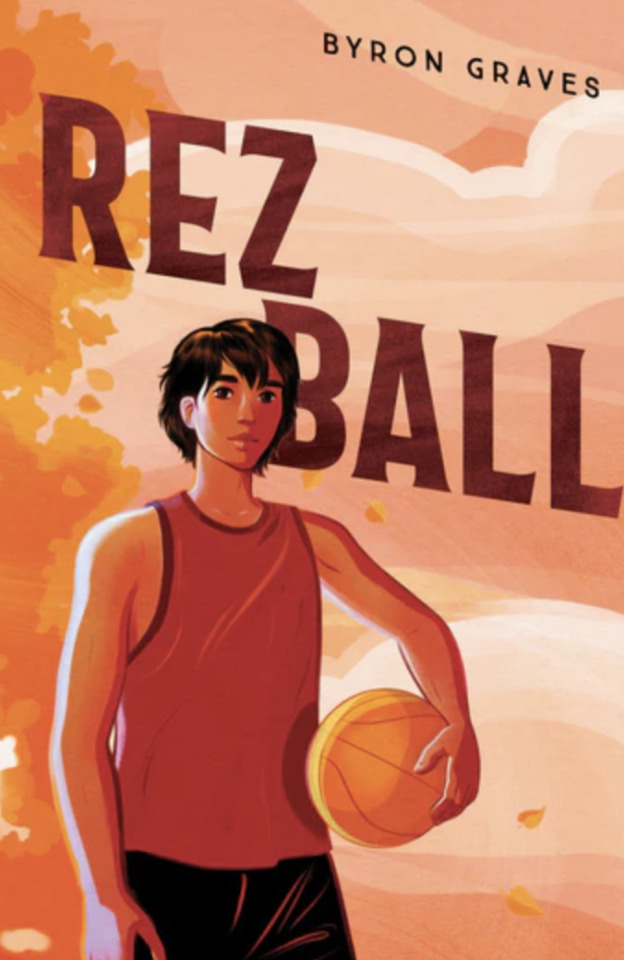
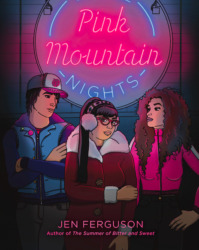




New Releases
I got an early look at Rez Ball and am really looking forward to seeing it out in the world. I'm excited for that and several others this week.
Rez Ball by Byron Graves
Heartdrum
This compelling debut novel by new talent Byron Graves tells the relatable, high-stakes story of a young athlete determined to play like the hero his Ojibwe community needs him to be. These days, Tre Brun is happiest when he is playing basketball on the Red Lake Reservation high school team—even though he can’t help but be constantly gut-punched with memories of his big brother, Jaxon, who died in an accident. When Jaxon’s former teammates on the varsity team offer to take Tre under their wing, he sees this as his shot to represent his Ojibwe rez all the way to their first state championship. This is the first step toward his dream of playing in the NBA, no matter how much the odds are stacked against him. But stepping into his brother’s shoes as a star player means that Tre can’t mess up. Not on the court, not at school, and not with his new friend, gamer Khiana, who he is definitely not falling in love with. After decades of rez teams almost making it, Tre needs to take his team to state. Because if he can live up to Jaxon’s dreams, their story isn’t over yet. This book is published by Heartdrum, an imprint that publishes high-quality, contemporary stories about Indigenous young people in the United States and Canada.
Those Pink Mountain Nights by Jen Ferguson
Heartdrum
In her remarkable second novel following her acclaimed debut, The Summer of Bitter and Sweet, which won the Governor General’s Award and received six starred reviews, Jen Ferguson writes about the hurt of a life stuck in past tense, the hum of connections that cannot be severed, and one week in a small snowy town that changes everything.
Over-achievement isn’t a bad word—for Berlin, it’s the goal. She’s securing excellent grades, planning her future, and working a part-time job at Pink Mountain Pizza, a legendary local business. Who says she needs a best friend by her side?
Dropping out of high school wasn’t smart—but it was necessary for Cameron. Since his cousin Kiki’s disappearance, it’s hard enough to find the funny side of life, especially when the whole town has forgotten Kiki. To them, she’s just another missing Native girl.
People at school label Jessie a tease, a rich girl—and honestly, she’s both. But Jessie knows she contains multitudes. Maybe her new job crafting pizzas will give her the high-energy outlet she desperately wants.
When the weekend at Pink Mountain Pizza takes unexpected turns, all three teens will have to acknowledge the various ways they’ve been hurt—and how much they need each other to hold it all together.
Ab(solutely) Normal: Short Stories That Smash Mental Health Stereotypes edited by Nora Shalaway Carpenter & Rocky Callen
Candlewick Press
Channeling their own experiences, sixteen exceptional authors subvert mental health stereotypes in a powerful and uplifting collection of fiction.
A teen activist wrestles with protest-related anxiety and PTSD. A socially anxious vampire learns he has to save his town by (gulp) working with people. As part of her teshuvah, a girl writes letters to the ex-boyfriend she still loves, revealing that her struggle with angry outbursts is related to PMDD. A boy sheds uncontrollable tears but finds that in doing so he’s helping to enable another’s healing. In this inspiring, unflinching, and hope-filled mixed-genre collection, sixteen diverse and notable authors draw on their own lived experiences with mental health conditions to create stunning works of fiction that will uplift and empower you, break your heart and stitch it back together stronger than before. Through powerful prose, verse, and graphics, the characters in this anthology defy stereotypes as they remind readers that living with a mental health condition doesn’t mean that you’re defined by it. Each story is followed by a note from its author to the reader, and comprehensive back matter includes bios for the contributors as well as a collection of relevant resources.
With contributions by:
Mercedes Acosta * Karen Jialu Bao * James Bird * Rocky Callen * Nora Shalaway Carpenter * Alechia Dow * Patrick Downes * Anna Drury * Nikki Grimes * Val Howlett * Jonathan Lenore Kastin * Sonia Patel * Marcella Pixley * Isabel Quintero * Ebony Stewart * Francisco X. Stork
Monstrous by Jessica Lewis
Delacorte Press
Forced to spend her summer in her aunt’s strange small town, a teen girl discovers dark secrets hidden in the woods. From the author of Bad Witch Burning comes another pulse-pounding novel perfect for fans of Supernatural and Lovecraft Country.
Don’t go outside past dark. Come straight home after church. And above all—never, ever, go into Red Wood.
These are the rules Latavia’s aunt tells her as soon as she arrives in Sanctum, Alabama for the summer. Weird, but Latavia isn’t here to solve any scary small town mysteries; she’s here for six weeks and six weeks only, and then she’s off to college and won’t look back. Still, Sanctum has its perks—mainly, the cute girl who works at the local ice cream shop.
But Latavia can’t ignore how strange her aunt’s tiny town is. The residents are suspicious of her and at times hostile, and it’s clear she’s some kind of outsider. That’s proven when Latavia is dragged out of her house in the dead of night, into the forbidden Red Wood, and presented as a human sacrifice to an ancient monster.
Latavia won’t be eaten without a fight. She’ll do whatever she has to do to survive—even if that includes making a deal with the monster, endangering her crush and family, and even risk turning into a monster herself.
The Name Drop by Susan Lee
Inkyard Press
New from the author of Seoulmates comes a story of mistaken identities, the summer of a lifetime, and a love to risk everything for.
When Elijah Ri arrives in New York City for an internship at his father’s massive tech company, Haneul Corporation, he expects the royal treatment that comes with being the future CEO—even if that’s the last thing he wants. But instead, he finds himself shuffled into a group of overworked, unpaid interns, all sharing a shoebox apartment for the summer.
When Jessica Lee arrives in New York City, she’s eager to make the most of her internship at Haneul Corporation, even if she’s at the bottom of the corporate ladder. But she’s shocked to be introduced as the new executive-in-training intern with a gorgeous brownstone all to herself.
It doesn’t take long for Elijah and Jessica to discover the source of the they share the same Korean name. But they decide to stay switched—so Elijah can have a relaxing summer away from his controlling dad while Jessica can make the connections she desperately needs for college recommendations.
As Elijah and Jessica work together to keep up the charade, a spark develops between them. Can they avoid discovery—and total disaster—with their feelings and futures on the line?
Goddess Crown by Shade Lapite
Walker Books US
In this thrilling Afro-fantasy, the first set in the lush, opulent kingdom of Galla, a girl raised in secret must leave her sheltered rural home for the subtle dangers of the royal court, where she becomes caught up in deadly power struggles and romantic intrigue.
Kalothia has grown up in the shadows of her kingdom, hidden away in the forested East after her parents were outed as enemies of the king. Raised in a woodland idyll by a few kindly adult caretakers, Kalothia can hunt and fish and fend for herself but knows little of the outside world. When assassins attack her home on her sixteenth birthday, she must flee to the king’s court in the West–a beautiful but lethal nest of poison, plots, and danger, overseen by an entrenched patriarchy. Guided by the Goddess herself, can Kalothia navigate this most worldly of places to find her own role? What if she must choose between her country and her heart? Excitement, romance, and a charismatic heroine shine in this first book set in the unforgettable kingdom of Galla.
12 notes
·
View notes
Text
Belly Dance Download Week 8
Belly dance tugs at the natural and instinctive indigenous and cosmic wisdom living in our female tissues because it activates the center of our reality, our belly, where all our power orients from. Without a relationship with our bellies, we have very little transformative power. If we do have achievements or transform our lives in other ways without a relationship to our bellies, we do it exhaustively and maybe create little injuries in our female parts that eventually lead to surgery. Anatomically, it is our belly we are cultivating a relationship with but energetically, it is our solar plexus, where our courage and individuated potentiality arise, and strength and willpower bloom. Warrior energy.
One of my close associates in class, a 60 year old Dutch woman, who looks and feels about 10 years younger due to her lifestyle that includes ballet lessons 3 days a week, stretch classes 5 days a week, face yoga, and eating mindfully, masters ways of moving her body, that for me, aren't easy to do, and vice versa. While she can twirl around in concurrent circles on the highest point of her tippy toes while shaking her hips in ways that are native to her body type and it look effortlessly attractive and mytho-poetical to the eye of the viewer, I can shimmy the geometry of my hips and buttocks vigorously while balancing a water bottle on my head and not waste a single drop as a kind of prose scribing the graces of a free woman. Some classmates asked me how I was able to do it, a class where I'm the only woman of African descent alongside 15 European and Asian women collectively.
I tell them, "Look at me ladies. It's part of my DNA that I have unlocked over the last 8 weeks. I don't know how I do it, but as soon as D (our Arabic teacher who skillfully teaches Egyptian Belly dance) told us to put the plastic bottle filled with water on our heads, I knew with the first shimmy that I was tapping into a familiar natural way of being that I couldn't intellectualize but knew was truthful to my spine. This posture was to teach us how how to isolate our upper body from our lower body, keeping our heads, necks, and torso straight but our center in rhythmic motion. Now I weave the art of carrying objects on my head into my night time winding down routine to see what other codes may reveal themselves to me eventually.
Women of the marketplace in Mexico, Asia, and certainly in Africa with their strong backs and protruding buttocks carry furniture and other large objects on their heads while walking casually from Point A to Point B, so surely, carrying a water bottle on my head is nothing to really gloat about. I told my 60 year old associate that "we all have our cultural gifts that make us shine even more beautifully. The way you twirl around on your tippy toes as if you are flying like a genie on a magical carpet is something that I probably will not be able to do. I can't be what you beautifully are. And you can't be what I beautifully am. And when we start to own this mutual remembrance of our individuated beauty without trying to erase or overlook it, without making belly dance be more elegant than twerking, both arts which are necessary for sensuous longevity in a female body, and without the competition or envy vibes patriarchy teaches us to model, what emerges in us together is a rhythm that can end all war.
In response, she said, "I see why you are a beautiful writer, India. You always have the best words to say."
I said back at her as I was leaving, "...and I see why you are the loveliest ballerina." -India Ame'ye, Author
11 notes
·
View notes
Note
how long did it take for you to learn skaru:re
Čaʔúhshęʔ nęwuhstá·kye· haʔ tyuʔtyá·tih wakaʔnewyęhsnęhá·ʔnyeʔ haʔ Skaruręʔkyéha·ʔ.
[Almost] [two years] [duration] [I have been going along studying] [the] [Skarù·ręʔ language].
or, "I've been studying Skarù·ręʔ for almost two years."
I'm definitely not fluent, but I can hold an ordinary conversation for about an hour or so and understand almost everything my instructor (who is the closest we have to a fluent speaker) says if I pay attention. My conversational skills are kindergarten-level on a bad day and maybe a fifth-grade level on a good day.
(My problem is social anxiety moreso that I have nothing to talk about, so I usually end up asking questions and listening more than speaking.)
Indigenous languages usually require a huge amount of speaking time before you can achieve fluency. I think for Haudenosaunee languages, it's about 3,500 hours. Our immersion program is structured so that we work on language for six hours a day, five days a week. And even though studying outside of class is not a strict requirement, it's highly recommended; I definitely feel the rust creep in whenever I neglect practice.
Last month we visited the Senecas, some of whom who are in year seven to year ten of their language learning, and the way they speak is nothing short of enviable. We largely flounder and stutter while their speaking is instantaneous. But I'm hoping one day we'll be able to achieve a degree of ease with our language too.
Then again, I started the program knowing absolutely nothing about the language, not even pronouns or how to construct sentences - just a handful of words I didn't even know how to spell. So I've come quite a ways since then.
5 notes
·
View notes